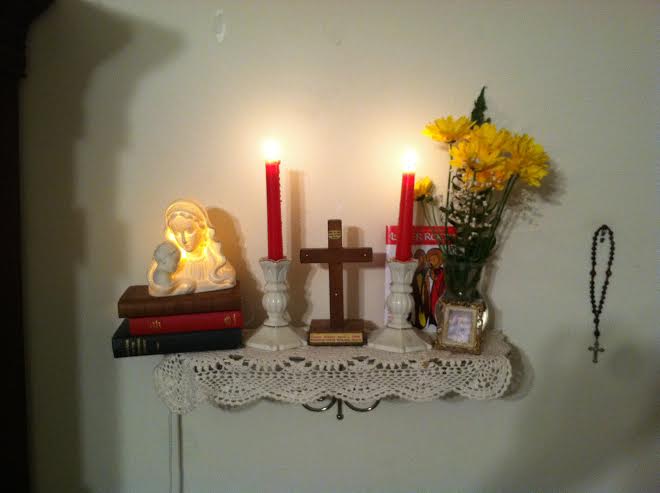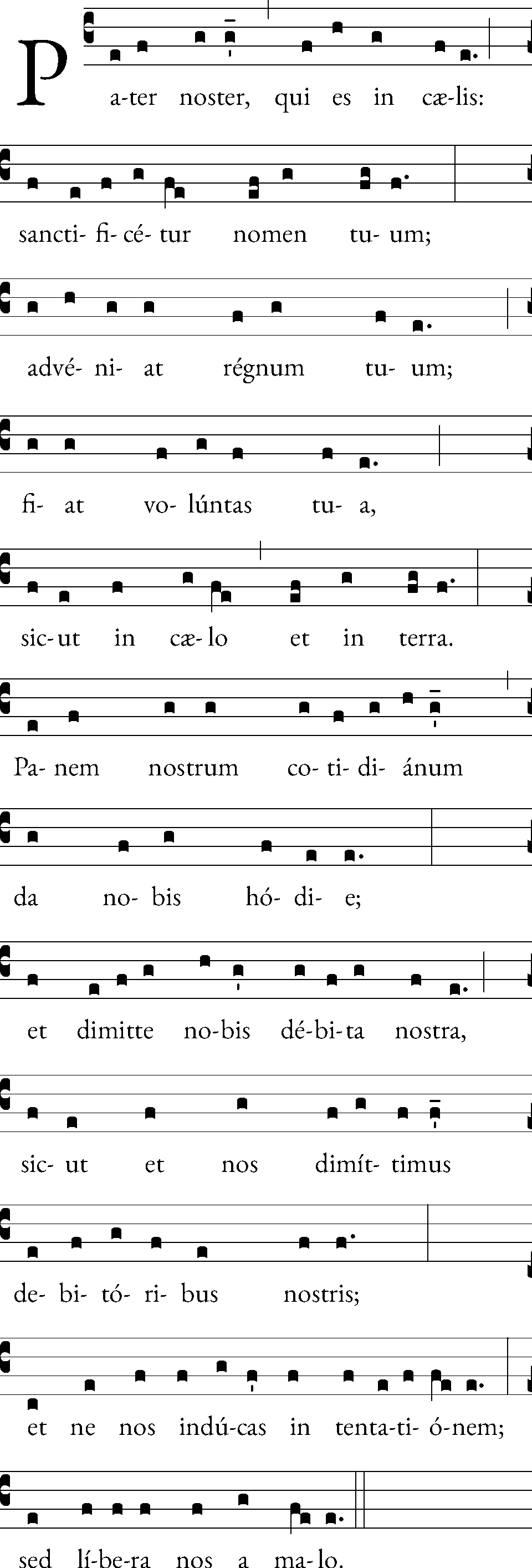|
Anglican Rosary
Anglican prayer beads, also known as the Anglican rosary or Anglican chaplet, are a loop of strung Christian prayer beads used chiefly by Anglicans in the Anglican Communion, as well as by communicants in the Anglican Continuum. This Anglican devotion has spread to other Christian denominations, including Methodists and the Reformed. Description Anglican prayer bead sets consist of a cross and thirty-three beads. Beads The loop is formed of thirty-two beads. Twenty-eight of the beads are divided into four groups consisting of seven beads, each which are called "weeks". The four larger beads separating the four groups are called "cruciform" beads. When the loop of an Anglican prayer bead set is opened into a circular shape, the "cruciform" beads form the points of a cross within the circle of the set, hence the term. Next after the cross on Anglican prayer bead sets is a single bead called the "invitatory" bead, which brings the total of beads to thirty-three. Materials ... [...More Info...] [...Related Items...] OR: [Wikipedia] [Google] [Baidu] |
Anglican Breviary
The ''Anglican Breviary'' is an Anglican edition of the Liturgy of the Hours, Divine Office translated into English, used especially by Anglicans of Anglo-Catholicism, Anglo-Catholic churchmanship. It is based on the ''Roman Breviary'' as it existed prior to both the Second Vatican Council and the Liturgical reforms of Pope Pius XII, 1955 liturgical reforms of Pope Pius XII. It contains the liturgical offices of the hours: *Matins or Midnight Prayer (Midnight) *Lauds or Dawn Prayer (Dawn) *Prime (liturgy), Prime or Early Morning Prayer (7 am) *Terce or Mid-Morning Prayer (9 am) *Sext or Midday Prayer (12 noon) *None (liturgy), None or Mid-Afternoon Prayer (3 pm) *Vespers or Evening Prayer (6 pm) *Compline or Night Prayer (9 pm) See also *Anglican Missal *English Missal External links Anglican Breviary website [...More Info...] [...Related Items...] OR: [Wikipedia] [Google] [Baidu] |
Christian Cross
The Christian cross, seen as representing the crucifixion of Jesus, is a religious symbol, symbol of Christianity. It is related to the crucifix, a cross that includes a ''corpus'' (a representation of Jesus' body, usually three-dimensional) and to the more general family of cross, cross symbols. The term '':wikt:cross, cross'' is now detached from its original specifically Christian meaning, in Early Modern English, modern English and many other Western languages. The basic forms of the cross are the Latin cross with unequal arms and the Greek cross with equal arms; there are numerous Christian cross variants, variants, partly with confessional significance—such as the tau cross, the Patriarchal cross, double-barred cross, Papal cross, triple-barred cross, and Jerusalem cross, cross-and-crosslets—and many heraldic cross, heraldic variants, such as the cross potent, cross pattée, and cross moline, cross fleury. Pre-Christian symbolism A version of the cross symbol was use ... [...More Info...] [...Related Items...] OR: [Wikipedia] [Google] [Baidu] |
Anglican Liturgy
Anglican liturgy usually refers to liturgies according the '' Book of Common Prayer'' and its derivatives. It may also refer to the following liturgies and liturgical books used by churches and groups in the Anglican Christian tradition: Liturgies *The liturgy of the Anglican Communion * Daily Office (Anglican), the canonical hours within Anglican practice **a version of Compline, or night prayer, used by some Anglicans ** Evensong, a form of Vespers with singing often used by Anglicans ** Prayer During the Day, a form of midday prayers introduced in the Church of England's ''Common Worship'' *Holy Communion, often also known as Mass Mass is an Intrinsic and extrinsic properties, intrinsic property of a physical body, body. It was traditionally believed to be related to the physical quantity, quantity of matter in a body, until the discovery of the atom and particle physi ..., Holy Eucharist, or the Lord's Supper **'' The Holy Eucharist: Rite Two'', a version of the Holy Com ... [...More Info...] [...Related Items...] OR: [Wikipedia] [Google] [Baidu] |
Anglican Mariology
Anglicanism, also known as Episcopalianism in some countries, is a Western Christian tradition which developed from the practices, liturgy, and identity of the Church of England following the English Reformation, in the context of the Protestant Reformation in Europe. It is one of the largest branches of Christianity, with around 110 million adherents worldwide . Most are members of national or regional ecclesiastical provinces of the international Anglican Communion, one of the largest Christian bodies in the world, and the world's third-largest Christian communion. When united churches in the Anglican Communion and the breakaway Continuing Anglican movement were not counted, there were an estimated 97.4 million Anglicans worldwide in 2020. Adherents of Anglicanism are called ''Anglicans''; they are also called ''Episcopalians'' in some countries. The provinces within the Anglican Communion are in full communion with the See of Canterbury and thus with the archbishop of Ca ... [...More Info...] [...Related Items...] OR: [Wikipedia] [Google] [Baidu] |
Rosary
The Rosary (; , in the sense of "crown of roses" or "garland of roses"), formally known as the Psalter of Jesus and Mary (Latin: Psalterium Jesu et Mariae), also known as the Dominican Rosary (as distinct from other forms of rosary such as the Rosary-based prayers, Franciscan Crown, Bridgettine Rosary, Rosary of the Holy Wounds, etc.), refers to a set of prayers used primarily in the Catholic Church, and to the physical string of knots or beads used to count the component prayers. When referring to the prayer, the word is usually capitalized ("the Rosary", as is customary for other names of prayers, such as "the Lord's Prayer", and "the Hail Mary"); when referring to the prayer beads as an object, it is written with a lower-case initial letter (e.g. "a rosary bead"). The prayers that compose the Rosary are arranged in sets of ten Hail Marys, called "decades". Each decade is preceded by one Lord's Prayer ("Our Father"), and traditionally followed by one Glory Be. Some Catholics ... [...More Info...] [...Related Items...] OR: [Wikipedia] [Google] [Baidu] |
Christian Prayer
Christian prayer is an important activity in Christianity, and there are several different forms used for this practice. Christian prayers are diverse: they can be completely spontaneous, or read entirely from a text, such as from a breviary, which contains the canonical hours that are said at fixed prayer times. While praying, certain gestures usually accompany the prayers, including folding one's hands, Bowing#Christianity, bowing one's head, kneeling (often in the kneeler of a pew in corporate worship or the kneeler of a prie-dieu in private worship), and Prostration#Christianity, prostration. The most prominent prayer among Christians is the Lord's Prayer, which according to the gospel accounts (e.g. wikisource:Bible (American Standard)/Matthew#6:9, Matthew 6:9-13) is how Jesus in Christianity, Jesus taught his Disciple (Christianity), disciples to pray. The injunction for Christians to pray the Lord's Prayer thrice daily was given in ''Didache'' 8, 2 f., which, in turn, was ... [...More Info...] [...Related Items...] OR: [Wikipedia] [Google] [Baidu] |
Holy Trinity
The Trinity (, from 'threefold') is the Christian doctrine concerning the nature of God, which defines one God existing in three, , consubstantial divine persons: God the Father, God the Son (Jesus Christ) and God the Holy Spirit, three distinct persons ('' hypostases'') sharing one essence/substance/nature ('' homoousion''). As the Fourth Lateran Council declared, it is the Father who s, the Son who is , and the Holy Spirit who proceeds. In this context, one essence/nature defines God is, while the three persons define God is. This expresses at once their distinction and their indissoluble unity. Thus, the entire process of creation and grace is viewed as a single shared action of the three divine persons, in which each person manifests the attributes unique to them in the Trinity, thereby proving that everything comes "from the Father", "through the Son", and "in the Holy Spirit". This doctrine is called Trinitarianism, and its adherents are called Trinitarians, whil ... [...More Info...] [...Related Items...] OR: [Wikipedia] [Google] [Baidu] |
Lord's Prayer
The Lord's Prayer, also known by its incipit Our Father (, ), is a central Christian prayer attributed to Jesus. It contains petitions to God focused on God’s holiness, will, and kingdom, as well as human needs, with variations across manuscripts and Christian traditions. Two versions of this prayer are recorded in the gospels: a longer form within the Sermon on the Mount in the Gospel of Matthew, and a shorter form in the Gospel of Luke when "one of his disciples said to him, 'Lord, teach us to pray, as John taught his disciples. Scholars generally agree that the differences between the Matthaean and Lucan versions of the Lord’s Prayer reflect independent developments from a common source. The first-century text '' Didache'' (at chapter VIII) reports a version closely resembling that of Matthew and the modern prayer. It ends with the Minor Doxology. Theologians broadly view the Lord’s Prayer as a model that aligns the soul with God’s will, emphasizing praise, tr ... [...More Info...] [...Related Items...] OR: [Wikipedia] [Google] [Baidu] |
Cruciform
A cruciform is a physical manifestation resembling a common cross or Christian cross. These include architectural shapes, biology, art, and design. Cruciform architectural plan Christian churches are commonly described as having a cruciform architecture. In Early Christian, Byzantine and other Eastern Orthodox forms of church architecture this is likely to mean a tetraconch plan, a Greek cross, with arms of equal length or, later, a cross-in-square plan. In the Western churches, a cruciform architecture usually, though not exclusively, means a church built with the layout developed in Gothic architecture. This layout comprises: *An east end, containing an altar and often with an elaborate, decorated window, through which light will shine in the early part of the day. *A west end, which sometimes contains a baptismal font, being a large decorated bowl, in which water can be firstly, blessed (dedicated to the use and purposes of God) and then used for baptism. *North and s ... [...More Info...] [...Related Items...] OR: [Wikipedia] [Google] [Baidu] |
Home Altar
A home altar or family altar is a shrine kept in the home of some Western Christian families used for Christian prayer and family worship. Home altars often contain a cross or crucifix, an image of Jesus Christ, a copy of the Bible (especially a Family Bible), a breviary and/or other prayer book, a daily devotional, and prayer beads, among other religious articles specific to the individual's Christian denomination, for example, the images of the saints for Catholics, the Small Catechism for Lutherans, and the Anglican prayer beads for Anglicans. History ''The Christian Treasury'' traces the origin of the family altar to the prophet Abraham erecting one in the Old Testament (). Since at least the 2nd century, believers such as Hipparchus, hung or painted a Christian cross, to which they prostrated in front of, on the eastern wall of their home in order to indicate the eastward direction of prayer during the seven fixed prayer times, as an "expression of their undying beli ... [...More Info...] [...Related Items...] OR: [Wikipedia] [Google] [Baidu] |





